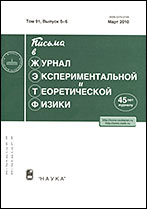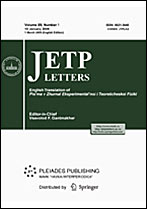|
FIELDS, PARTICLES, AND NUCLEI
Final state interaction effects in $B^+\to D^+K^0$ decay
H. Mehraban, A. Asadi, M. Borhani
University of Semnan
Abstract:
In this research the exclusive decay of
$B^+\to D^+K^0$ is calculated by QCD factorization method
(QCDF) and final state interaction (FSI). First, the $B^+\to D^+K^0$
decay is calculated via QCDF method. The result that is found by using the QCDF
method is less than the experimental result.
So FSI is considered to solve the $B^+\to D^+K^0$ decay.
For this decay, the $D_s^+\pi^0$, ${D_s^+}^*\rho^0$, ${D_s^+}^*\phi$
via the exchange of
$\bar{K}^0$,
${\bar{K}^0{}}^*$,
$D^-$, and ${D^-{}}^*$
mesons are chosen for the intermediate states. The above intermediate states are
calculated by using the QCDF method. In the FSI effects, the results of our
calculations depend on $\eta$ as the phenomenological parameter.
The range of this parameter is selected from $2$ to $2.4$. It is found
that if $\eta=2.4$ is selected, the numbers of the branching ratio are placed in
the experimental range. The experimental branching ratio of this decay is less
than $2.9\cdot10^{-6}$ and our results calculated by QCDF and FSI are
$(0.16\pm0.04)\cdot10^{-6}$ and $(2.8\pm0.09)\cdot10^{-6}$ respectively.
Received: 04.07.2014
Citation:
H. Mehraban, A. Asadi, M. Borhani, “Final state interaction effects in $B^+\to D^+K^0$ decay”, Pis'ma v Zh. Èksper. Teoret. Fiz., 100:5 (2014), 323–331; JETP Letters, 100:5 (2014), 285–294
Linking options:
https://www.mathnet.ru/eng/jetpl4108 https://www.mathnet.ru/eng/jetpl/v100/i5/p323
|


|





 Contact us:
Contact us: Terms of Use
Terms of Use
 Registration to the website
Registration to the website Logotypes
Logotypes







 Citation in format
Citation in format 